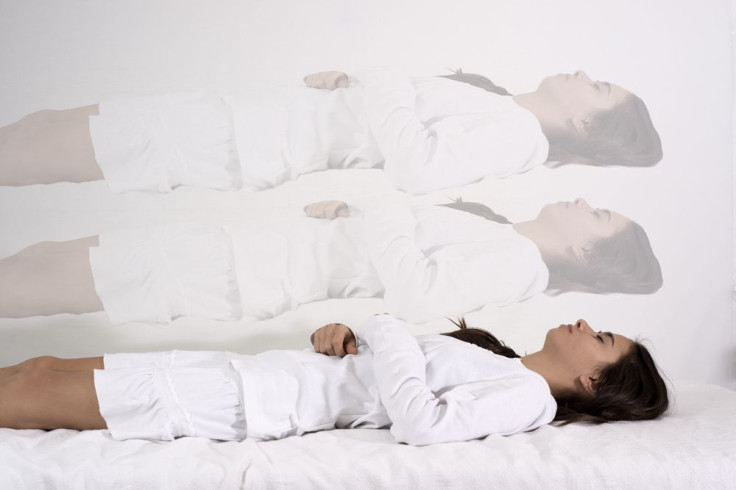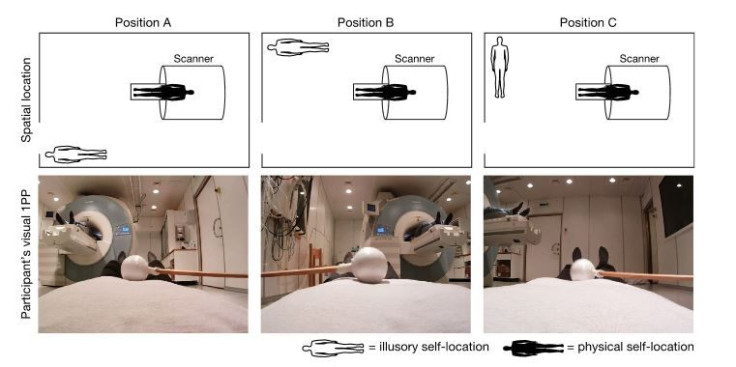Scientists Create Out Of Body Experience To Better Understand Concsciousness

Where does consciousness reside? What makes us know that we are in our own bodies? For a new study from Sweden's Karolinska Institutet, neuroscientists created an out-of-body illusion in volunteers lying inside a brain scanner and then used this illusion to perceptually teleport them around a room. Importantly, the neuroscientists were able to decode activity patterns in specific brain regions that linked to volunteers' perceptions of their physical location.
Right this minute, you are a body occupying an exact space — but how does your brain understand this? Past research has uncovered specific regions in a rat’s brain that contain GPS-like place cells to signal the animals’ position in a room. But it’s not clear the same thing occurs with humans. What is known is our sense of being inside our own bodies while commanding a given space within the world is an enormously complex mental task. Continuously, our brains must integrate data from all of our senses to maintain the awareness of our body’s location with respect to the exterior world.
Neuro-Illusionists
To understand how the brain accomplishes this difficult task, a group of scientists created an out-of-body illusion in 15 healthy participants lying inside a brain scanner. For the experiment, the participants wore head-mounted displays and viewed themselves (within the scanner) from another part of the room. From this new visual perspective, the participant observes the body of a stranger, while the scientist touches the participant's body in synchrony with identical touches being delivered to the stranger's body.

“In a matter of seconds, the brain merges the sensation of touch and visual input from the new perspective, resulting in the illusion of owning the stranger's body and being located in that body's position in the room,” Dr. Arvid Guterstam, lead author and doctoral candidate at Karolinska, stated in a press release.
Next, the scientists used this out-of-body illusion to perceptually teleport each participant between different places in the scanner room. Meanwhile, they used pattern recognition techniques to analyze a participant's brain activity. Here they discovered the participant’s sense of location could be decoded from brain activity ranging across the parieto-cingulate-hippocampal regions.
“Our results suggest that the posterior cingulate orchestrates the flow of information concerning bodily self-location between the intraparietal sulcus and the hippocampus,” the researchers concluded.
Importantly, the hippocampus is the structure in which the "place cells" have been identified. This new evidence, then, indicates place cells not only participate in navigation and memory encoding but also play some role in generating the conscious experience of being a body in space.
Source: Guterstam A, Bjornsdotter M, Gentile G, Ehrsson HH. Posterior Cingulate Cortex Integrates the Senses of Self-Location and Body Ownership. Current Biology. 2015.



























